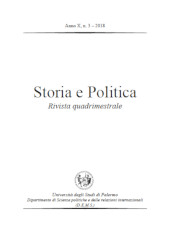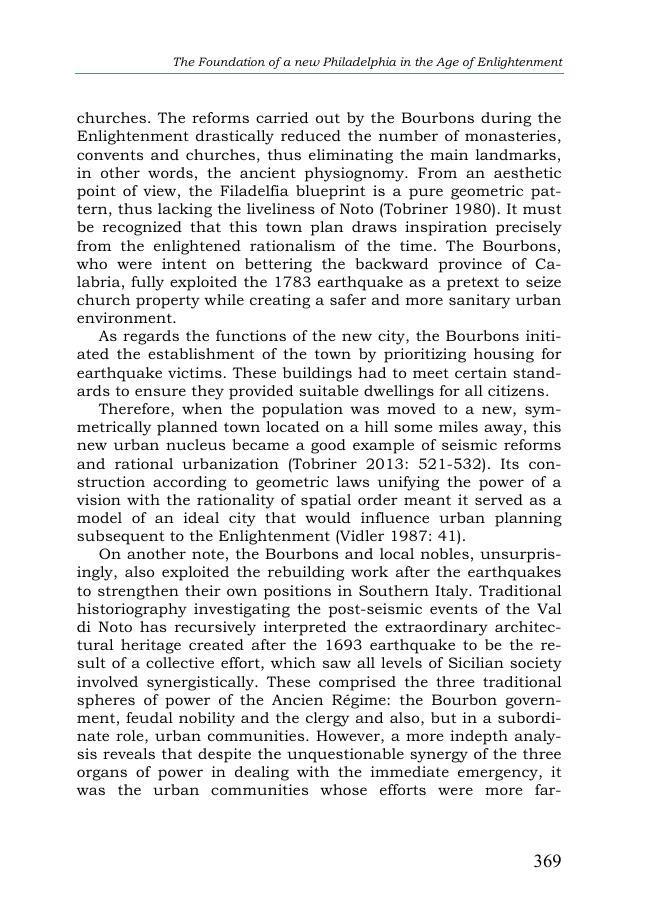The bourbon city of brotherly love : the foundation of a new Philadelphia in the age of enlightenment
351-387 p.
In 1783 earthquakes devastated Calabria, destroying many towns including Castelmonardo, a mountain village. The survivors were forced to rebuild in a more favorable location and renamed the new city Filadelfia. This essay highlights the similarities between this city and the American Philadelphia. Since intellectual élites in the Kingdom of Naples had frequent contact with American thinkers, urban planners imitated William Penn's blueprint for the Pennsylvanian capital, evidence of the links between Masonry and the Neapolitan Enlightenment. Filadelfia became a model of rationalist urbanization and seismic reforms. The topic is intriguing from a variety of prospects, from Italian-American cultural history to the history of urban form and founded towns. Masonic thinking was important to the form of the town, and there were specifically Masonic formal and symbolic elements in the town plan.
Enlightenment ideals - operative in the foundation of the American city of Philadelphia - were in play in the reconstruction of the Calabrian city of Castelmonardo as the new Filadelfia. After outlining the circumstances of the establishment of Filadelfia, the role of Freemasonry in Italy, and the influence of Italian thought in American Enlightenment thinking, the essay ends looking at the 17th century rebuilding efforts and comparing them with the 18th century ideals: where we might see Philadelphia flourishing as the home of independence from tyranny in the signing of the Constitution, and Filadelfia failing to fulfill the promise of a city of brotherly love due to the exclusion of the entire peasant class and the continuation of a suffocating feudalism. [Publisher's text].
-
Articoli dello stesso fascicolo (disponibili singolarmente)
-
-
Informazioni
ISSN: 2037-0520
PAROLE CHIAVE
- XVIII century, Enlightenment, Freemasonry, Benjamin Franklin, Gaetano Filangieri, Serrao family, Pignatelli family, Philadelphia, Filadelfia



